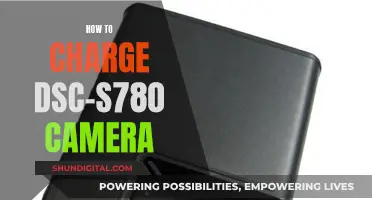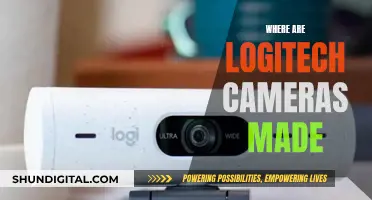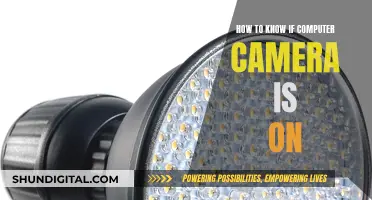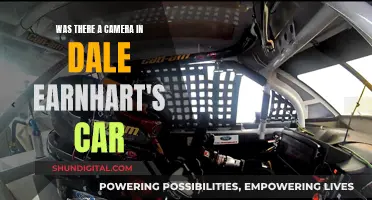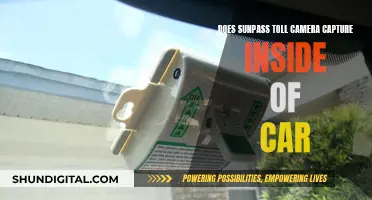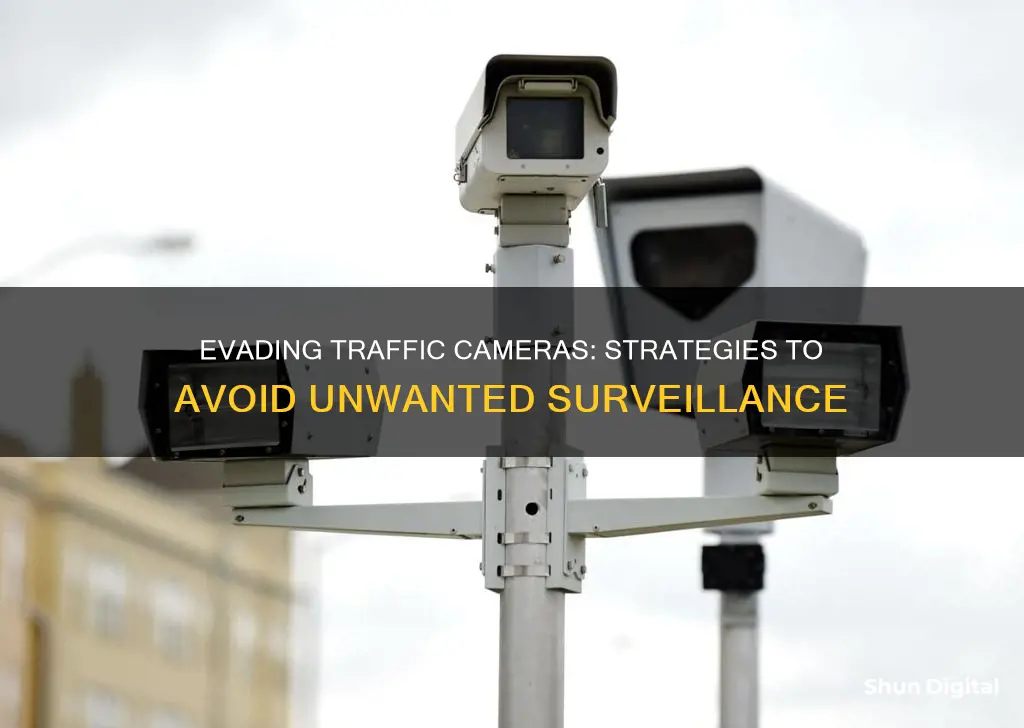
Getting a ticket for speeding or running a red light is never fun, but it can be even more frustrating when you're caught by a camera. The good news is that there are ways to fight a traffic camera ticket and possibly get it dismissed. The best course of action will depend on the specific circumstances of your case, but here are some general strategies to keep in mind.
First, carefully examine your ticket and the associated photos or videos. Look for any defects or inconsistencies that could work in your favour, such as a blurry photo that doesn't clearly show your license plate or your face. You should also review the relevant traffic laws and camera maintenance records to identify any potential issues with the camera system or its implementation. For example, some states require warning signs to be posted near red light cameras, and the absence of these signs could be a valid defence.
Another important factor is whether you were actually driving the car when the ticket was issued. In most states, it's the driver who is liable for the violation, not the registered owner of the vehicle. So, if someone else was borrowing your car, you may be able to get the ticket dismissed.
If you decide to fight the ticket, you'll typically need to plead not guilty by mail, online, or in person at an arraignment. Be sure to respond before the deadline, which is usually around 30 days from receiving the ticket. Keep in mind that fighting a traffic camera ticket can be a complex process, and you may benefit from consulting a legal professional.
| Characteristics | Values |
|---|---|
| Check the ticket details | Check the date, time, and location of the ticket. Confirm you were driving the car when the ticket was issued. |
| Understand the law | Research the applicable law and any relevant cases in your city or county about traffic cameras. Understand the elements and penalties of the violation you're cited for. |
| Review the photos and videos | Request and examine the photos and videos of the incident. Look for any defects, inconsistencies, or defences. Argue that the prosecution cannot prove you were driving. |
| Plead not guilty | Plead not guilty by mail, online, or in person at an arraignment. Do not pay the fine if doing so is considered an admission of guilt. |
| Request a formal hearing | Demand a full formal hearing or trial. Attend any required pre-trial hearings or mediations but aim for a full dismissal of the ticket. |
| Request documents | Call the local police department or law enforcement agency to request full maintenance records for the camera and traffic light or speed monitoring system. |
| Challenge the evidence | Dispute the authenticity, foundation, or admissibility of the photographs as hearsay. Argue that the prosecution cannot prove the traffic light or speed detection system was functioning properly. |
| Raise other defences | Mention any other possible defences, such as a necessity defence for speeding or the absence of required signage at the intersection. |
What You'll Learn

Examine the ticket and photos for inconsistencies
When you receive a traffic ticket, it is important to carefully examine the ticket and any accompanying photos for any inconsistencies. This can be a crucial step in identifying potential errors and building a strong defence. Here are some detailed instructions on how to examine your ticket and photos effectively:
Firstly, check the date, time, and location details mentioned on the ticket. Since camera tickets are usually sent to the registered owner of the vehicle, you need to confirm that you were indeed driving the car at the specified date, time, and location. If someone else was driving your car, you may not be held liable in most states. However, some states, like New York, treat red-light camera tickets as parking violations, holding the registered owner responsible. Therefore, it is essential to understand the specific red-light laws in your jurisdiction.
If you were driving, try to recall the details of the incident, such as whether you were making a legal right turn on a red light. If you were performing a legal manoeuvre, you should be able to get the ticket dismissed. Also, make a note of the specific code section you're cited for violating and understand the associated penalties and elements of the violation. Remember, the prosecution must prove each element of the violation, and it is not your responsibility to prove your innocence.
Now, carefully review the photos or videos that were sent with the ticket. Confirm that the vehicle in the images is indeed yours and that the photos are clear and identifiable. Blurry photos that do not clearly show your license plate or your face may serve as a valid defence. Additionally, if there is no clear photo of you in the driver's seat, the prosecution may have a harder time proving that you were the driver, especially in jurisdictions where the ticket follows the driver and not the vehicle owner.
If photos were not provided with the ticket, you may need to request them from the relevant law enforcement agency. At the same time, you can also request full maintenance and calibration records for the camera and associated equipment. Inconsistencies or malfunctions in the maintenance records could further strengthen your defence by calling into question the reliability of the photo evidence.
In summary, examining your ticket and photos for inconsistencies is a critical step in building your defence against a traffic camera ticket. By verifying details, reviewing photos, and understanding the applicable laws, you can identify potential errors and increase your chances of successfully disputing the ticket.
Traffic Cameras: Effective Eyes on the Road
You may want to see also

Plead not guilty and request a formal hearing
If you want to dispute a traffic camera ticket, you must plead not guilty and request a formal hearing. Here are some steps to follow:
Plead Not Guilty
Pleading not guilty is the first step in disputing a traffic camera ticket. In some jurisdictions, you may be able to do this by mail or online, especially for less serious violations such as speeding or running a red light. Check your citation and make sure to plead not guilty before the deadline, which is typically within 30 days of receiving the ticket. If you have no option to plead by mail or online, you must appear at the arraignment or first appearance hearing as listed on your citation. Remember that pleading not guilty means you cannot pay the fine listed on the ticket, as paying the fine is considered an admission of guilt in some jurisdictions.
Request a Formal Hearing
When you plead not guilty, demand a full formal hearing or trial. Requesting a full trial may also require you to attend other hearings such as pre-trial hearings or mediation. Attend these hearings as required, but maintain your request for a full dismissal of the ticket.
Research Applicable Laws
While waiting for your hearing, research the laws in your city or county regarding traffic cameras. Look for any appellate court decisions that have ruled on the legality of traffic camera tickets. There may be specific rules or defences recognised by law that you can use. For example, some states have rules about where warning signs must be posted for traffic cameras, or they may recognise a necessity defence for speeding.
Gather Evidence
Call the local police department or law enforcement agency responsible for the camera and request production of documents. Ask for copies of any photographs or videos that were not included with your citation, as well as maintenance records for the camera and traffic light or speed monitoring system. This information can help establish whether the equipment was regularly monitored, maintained, and tested for accuracy.
Attend the Hearing
Arrive at the courthouse on the day of your hearing, well-prepared and dressed professionally. Treat all courthouse staff with respect. During the hearing, listen quietly as the prosecutor presents their case, making notes of any points you want to address. Then, present your case and evidence, challenging the admissibility of the photographs as hearsay and asserting your right to confront any witnesses. Dispute the authenticity of the photographs if no one from the company that maintains the camera is present to testify. Attack the lack of evidence if the photos are unclear or do not show you driving the car.
Mastering Manual Focus: A Guide to Shooting Sharp Photos
You may want to see also

Research the law in your area
Researching the law in your area is a crucial step in building your defence against a traffic camera ticket. Here are some detailed instructions on how to go about it:
Firstly, look for cases in your city or county that are similar to your situation, involving traffic cameras. Check if any appellate court decisions have ruled on the legality of traffic camera tickets in your area. This will give you an idea of the precedents and how your case might be viewed by the court.
Next, familiarise yourself with the specific traffic laws in your area. For example, some states have particular rules about where warning signs must be posted for traffic lights. If you discover that the warning signs were obscured or not present where they should have been, you have a valid defence.
Additionally, some states legally recognise a necessity defence for speeding. This means that even if a camera captures you speeding, you may be able to justify it if you were, for instance, rushing to the hospital.
It is also worth checking the rules of civil procedure in your state or jurisdiction. There may be loopholes that you can use to your advantage, such as the requirement for effective and timely service of a summons.
Finally, if you intend to challenge the camera evidence, research the type of camera system used and how it works. Find out about the radar or sensor technology employed, and whether there are known issues with accuracy or maintenance. This information will be useful when questioning the admissibility and reliability of the camera evidence.
Mastering Auto Focus for Cinematic Camera Work
You may want to see also

Challenge the admissibility of the photo as hearsay
Hearsay is defined as an out-of-court statement presented in court to prove the truth of the matter asserted. In this case, the photo is an out-of-court "statement" that the prosecution is attempting to use to prove you violated the traffic law.
Hearsay evidence is inadmissible unless it fits into one of the exceptions. There are more than two dozen hearsay exceptions. Some courts have fit traffic camera photos into these exceptions, but others have not. Research your jurisdiction to find out if this objection is available to you.
To prevent the introduction of photographs at trial, evaluate if the photographs are an accurate representation of what the party seeks to show or argue through the image. Was the photo taken at a meaningful time? Does it provoke an emotional response? Is it cumulative evidence?
Defense counsel should ensure that there is no foundation objection possible. That is, are the photographs indeed of the victim? Is the photographer able to testify that the photograph is a true and accurate representation of what the photograph purports to be?
Defense counsel may then object that the photographs are more prejudicial than probative. Such photographs or displays may be excluded where the principal effect is to arouse the jury’s passion.
Moultrie Cameras: Where Are They Manufactured and Why?
You may want to see also

Dispute the authenticity of the photo
If you want to beat a traffic camera ticket, you can dispute the authenticity of the photo. Here's how:
Firstly, you must review the photos and videos that were sent to you with the ticket. If the photo is blurry and your license plate isn't clearly visible, this can be your best defence. If there's no photo of you in the driver's seat, the prosecution can't prove you were driving. However, you will be under oath, so you can't lie about it. If you weren't the driver, you can submit an affidavit swearing that you weren't driving, which will usually result in the dismissal of the ticket.
If the photos are clear, you can request full maintenance records for the camera and the traffic light or speed monitoring system. If the accuracy of the camera wasn't tested shortly before your ticket was issued, the photo may be deemed unreliable as evidence. You can also request the presence of a company representative in court to testify about the functioning of the camera. If no one from the company shows up, you can object to the use of the photographs for lack of foundation.
In some jurisdictions, a red light camera photo is considered hearsay. Hearsay is an out-of-court statement presented in court to prove the truth of the matter asserted. You can also assert your right to confront witnesses, as guaranteed by the Sixth Amendment of the Constitution.
Hacking Computer Cameras: Using CMD to Invade Privacy
You may want to see also
Frequently asked questions
You may be able to ignore it, as it may not be a certified court document. However, the photo radar company can still choose to impose fines, and if you are a repeat offender, there may be an investigation and you could face more serious charges.
One common defence is that the owner of the vehicle was not the person driving when the violation occurred. In most states, it is the driver, not the owner, who is liable for the violation. Another defence is that the photos and videos provided do not show a violation. A third defence is that the red light camera malfunctioned.
In most states, red light camera tickets are treated differently than other moving violations. Generally, a red light camera ticket won't add demerit points to your driving record or affect your insurance rates, and the fines are typically lower than for non-camera traffic violations.


